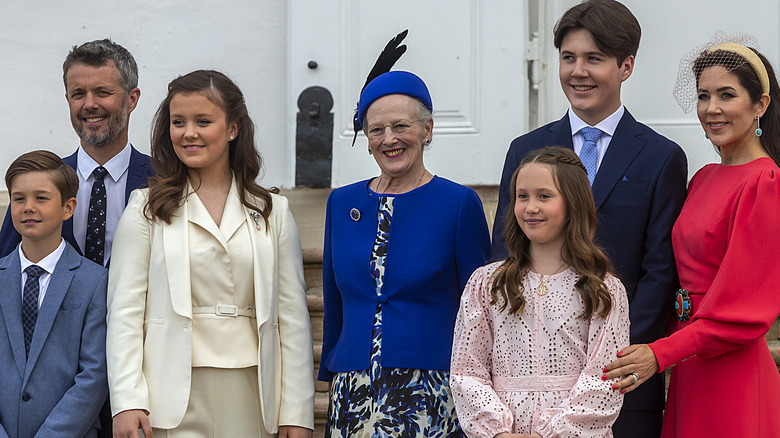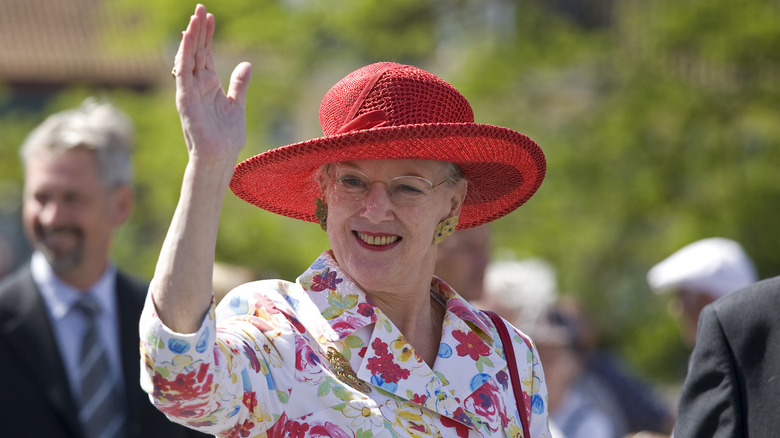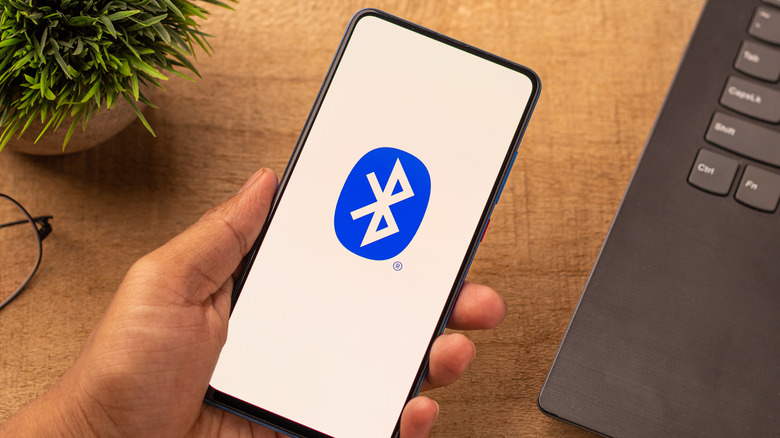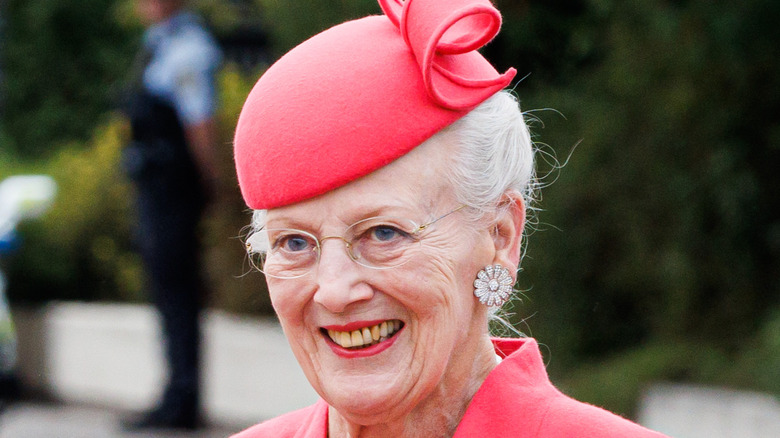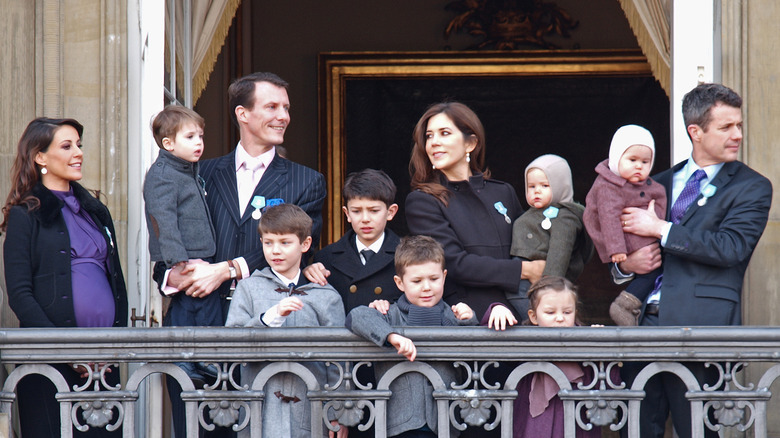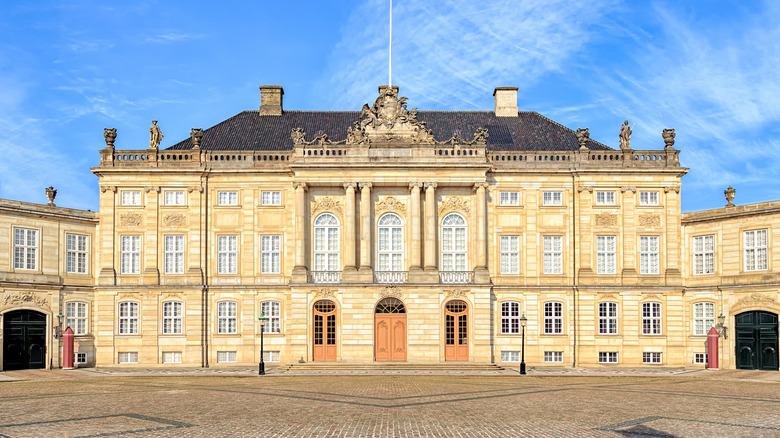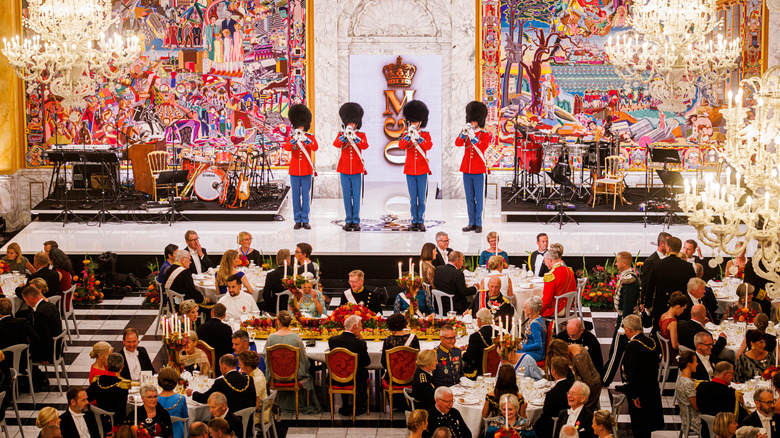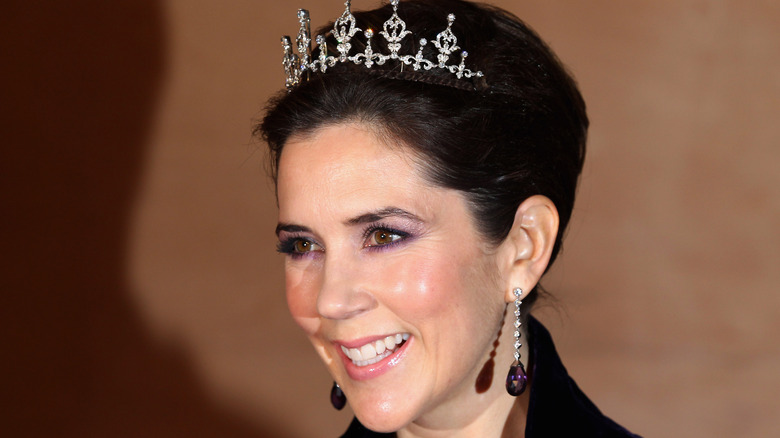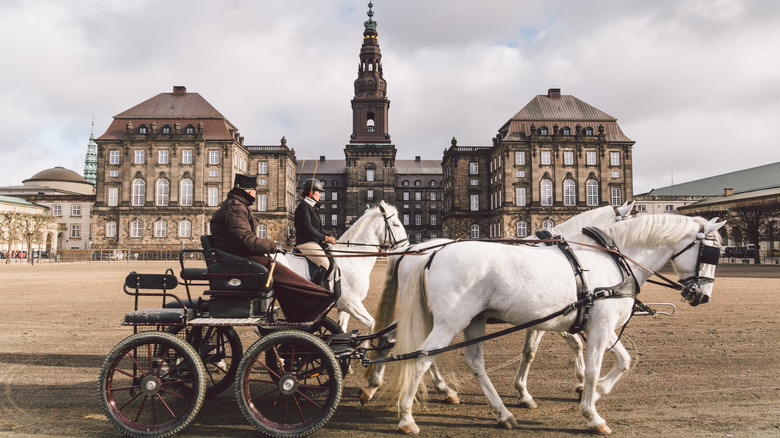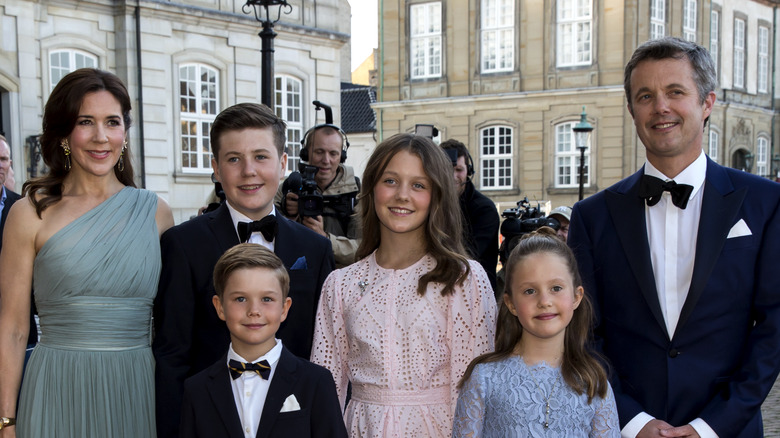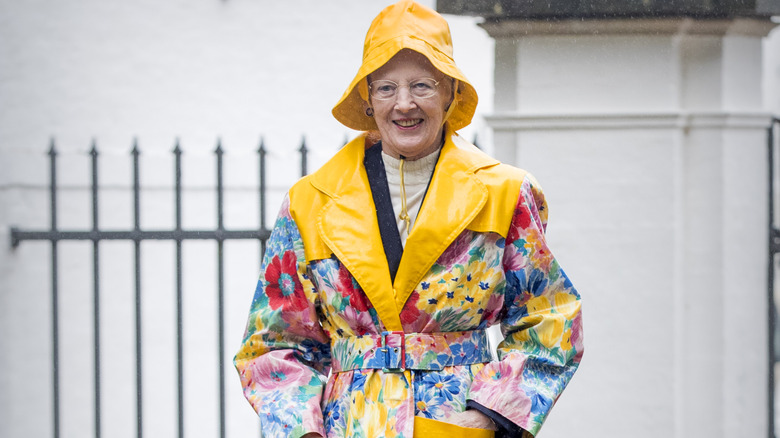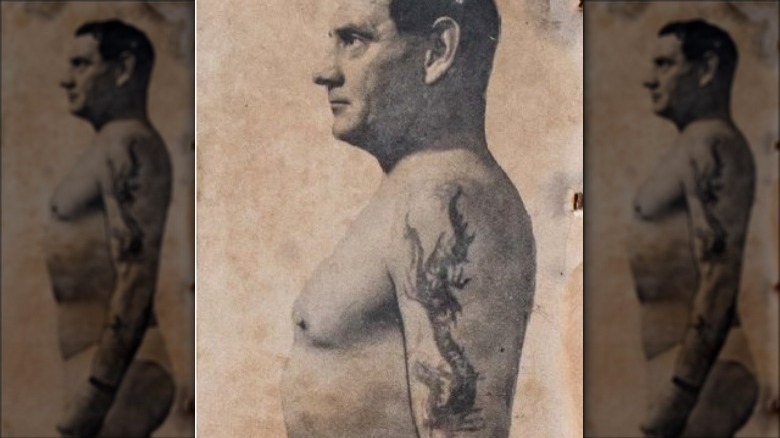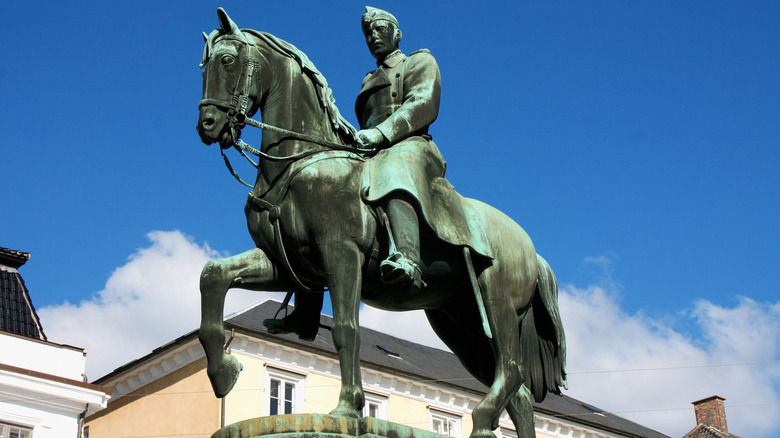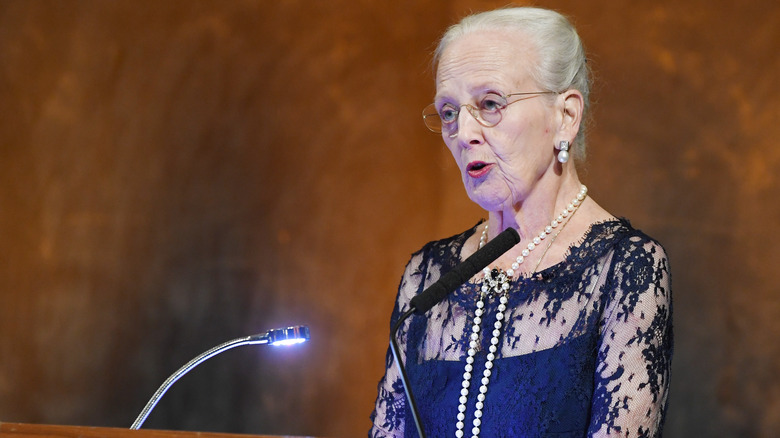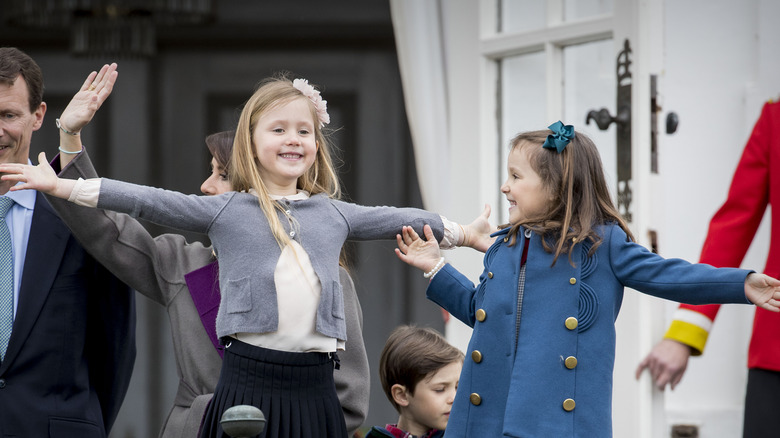The Danish Royal Family: 14 Facts About The 1,000-Year-Old Monarchy
If you've been religiously watching The Crown or trying to understand all of the many weird rules of the British monarchy, we have a new royal obsession for you: the Danish royal family. The royals are headed by the much-loved Queen Margrethe, second of her name. Seeing as Denmark is the second happiest place to live in the world, we were not surprised to learn that the Danes love their monarchy.
Starting with Gorm the Old in the 10th century A.D. and running all the way to current day, the Danish monarchy is one of the oldest in the world. Each generation in this historic family has witnessed and accomplished a lot. From their distinctive personality quirks and styles to their political influence and altruistic rulership, this royal family does not have a hard time holding the international spotlight — and they have managed it all with fairly few scandals.
Queen Margrethe has the highest approval rating of all reigning monarchs
When we say the Queen of Denmark is much loved, we're not kidding around. According to Express, her approval rating as of September 2022 is 80% — even surpassing the late Queen Elizabeth II's rating of 75% — and you know how many loyal fans the Queen of England had! So, what earned her such a high rating? Well, aside from her being the new longest-reigning living monarch in town, we're guessing it's her laid-back, one-of-the-people vibe.
Fans seem to like the monarch for her independent, down-to-earth attitude toward life. Internet memes really bring out the best of her candid moments. Apparently, she's also been spotted shopping at a local Danish supermarket, juice box and cigarette in one hand, pastry in the other, and a straw in her mouth. We think one Twitter user summed it all up well: "Hanging out with Margrethe II is my new life goal." Same.
Our everyday Bluetooth technology is named after a Viking king
Did you know the term "Bluetooth" actually originated from one of Queen Margrethe II's ancient ancestors? His name was Harald "Bluetooth" Gormsson, a nickname given to him for his allegedly rotten tooth, according to the Associated Press. This Viking king was credited with uniting Scandinavia with Christianity in the 10th century. According to the book "Viking Empires" written by Angelo Forte, Richard Oram, and Frederik Pedersen, the king's impact can be traced back to his expansion of the Jelling stones monuments in Denmark.
The term "Bluetooth" was coined and patented in the '90s to describe wirelessly uniting two devices, much in the same way the king had united separate areas of the land in the Viking age (via Intel). Founding engineer Jim Kardach took inspiration from a book about Vikings and created and standardized the technology we enjoy every day in 2022. You really can't make this stuff up!
Queen Margrethe II is Denmark's first female monarch since the 1300s
January 2022 marked the 50th anniversary of Queen Margrethe II's ascension to the throne, which she inherited after her father's death. According to the royal family's official website, the queen enjoyed a number of special celebratory events for her jubilee year. Though she has expressed confidence that her son will be ready to rule when the time comes, she has insisted, "I will stay on the throne until I drop" (via The Telegraph).
Before Queen Margrethe's ascension, Denmark hadn't seen a woman rule since Queen Margrete I's reign in 1387. The now-reigning monarch's father, King Frederick IX of Denmark, made it possible for his daughter to rule by adding an amendment to the Danish constitution in 1953. The Act of Succession enabled female descendants to take the throne if no other direct male heir could fill the role. Good news for Margrethe's descendants: the rule has since been amended to say that the oldest child, regardless of gender, can inherit the throne, which means Denmark could have another queen more frequently than every 600 years!
Like the Windsors, they've experienced some tension over titles
Between Prince Harry and Meghan Markle's choice to give up their royal highness titles to the Crown's decision to keep the title of queen consort for King Charles III's wife, Camilla, formal titles have always been a source of drama for the British royal family. And it appears the Danish royal family has been dealing with the same kind of tension.
In September 2022, the queen announced that her grandchildren would no longer be styled princes and princesses but counts and countesses instead. According to the reigning monarch's official statement, "With her decision, Her Majesty The Queen wishes to create the framework for the four grandchildren to be able to shape their own lives to a much greater extent without being limited by the special considerations and duties that a formal affiliation with the Royal House of Denmark as an institution involves."
This news didn't appear to land very well with one of her sons, Prince Joachim, who told Ekstra Blade that it affected his family in a very personal way: "We are all very sad. It's never fun to see your children being mistreated like that. They find themselves in a situation they do not understand."
After the backlash to her proclamation, the queen issued an apology but did not revoke the title change. In her follow-up statement, she claimed the decision was enacted sooner than expected in an effort to slowly modernize and slim down the monarchy over time: "This adjustment, which I view as a necessary future-proofing of the monarchy, I want to take in my own time."
The Danish royal family controls nine palaces
If one castle sounds like a lot, get ready for a shocker of a statistic: The Danish royal family controls nine different royal castles (via Express). One might question whether so many residences are really necessary, but rest assured — most are actually owned by the government.
Like many royal estates, these compounds and palaces were passed down from the generations that purchased or constructed them. In the case of Christian VII's palace at Amalienborg, the residence was acquired when the royal family found themselves homeless after a fire. Christiansborg Palace, which burnt down twice, has been used for affairs of state, including the seat of parliament and the prime minister's office.
When the Danish royals want to get away to the country and have celebrations, they take off to Fredensborg Palace. The estate known as Hermitage Palace, on the other hand, offers spectacular hunting grounds for the royal family. According to the Crown's official website, the palace featured a table that could be hoisted up and down through the kitchen and dining hall so the family could dine sans servants. This was known as an "en Hermitage" in French, thus the name of the estate. Though it's a unique device to be sure, it was removed in the mid-1700s.
They host formal balls but only occasionally
We've all been dreaming of beautiful, glistening balls and fancy royal attire after seeing Season 2 of "Bridgerton" and HBO's "House of the Dragon." As part of their royal privilege, the Danish royal family enjoys these decadent events in real life, though not on a whim. According to People, the September 2022 gala at Christiansborg was rare, as galas are only held every four years in concurrence with the parliamentary cycle.
When they do host a ball, though, they break out the tiaras and honorary decorations. In an Instagram video shared by the royal family in September, the royal guard lined the entryway of Christiansborg Palace as the royal family entered the palace to greet their guests. Each person was decked out with the appropriate crown jewels, sashes, and military decorations. The queen and crown prince can both be seen wearing a cross pin and a blue sash, which represent the Order of the Elephant – a very prestigious chivalry token. There's no doubt about it — the Danish royals take their roles very seriously, even when they party!
Princess Mary is an international fashion icon
Catherine, Princess of Wales, isn't the only European style icon who has made headlines. From her stunningly regal wedding dress to her classy everyday looks, Crown Princess Mary of Denmark has turned heads for years with her fashion-forward looks. The best part? She's been using her influence to encourage more sustainable fashion choices. Between saving her best fits for her daughters to inherit, re-wearing her favorites, and encouraging fashion industry leaders to reduce their environmental impact, Mary is an inspiration to all of us who want to ditch fast fashion.
In her opening speech at the 2021 Copenhagen Fashion Summit, she encouraged attendees to be more selective with purchases, materials, and emissions. "Education of future fashion designers must ensure that sustainability is a norm in design, textile choice, production, and marketing," she said (via 9Honey). "Each and every contribution, however small, adds up to something much bigger." Her brains and beauty are *chef's kiss*!
The Danish royal family isn't as rich as they seem
While members of the Danish royal family do live a life of luxury few of us will ever personally know, it's important to recognize where their money comes from. True, they don beautiful jewels, ride around in chauffeured cars, and manage roughly 130 employees over numerous estates, but does all of that power actually belong to one family? The answer is no, not quite.
When Denmark's constitutional democracy was first established in 1849, the royal residences passed into government control. Since then, the state has controlled the royal family's use of property and wealth (for the most part). They don't own most of their castles, they can't sell or gift the crown jewels, and they pay their bills with an annual annuity. No wonder they're so prim and proper all the time — their entire lifestyle depends on their public performance!
The royal children all started out attending public school
Queen Margrethe II has eight grandchildren, some of whom are all grown up! One would think these kids would immediately be funneled into the hands of the finest private tutors and prestigious schools money can buy, but the case isn't necessarily so. Crown Prince Frederik and Princess Mary's four children each attended public primary school at Tranegård, located in Hellerup, Denmark (via Hello! magazine).
After finishing his schooling at Tranegård, the couple's oldest child, Christian, attended boarding school for a time. According to People, the crown prince and his wife pulled him out of the school, Herlufsholm School, in 2022 after allegations of both bullying and sexual abuse — unrelated to Christian — came to light. In one statement, the couple said they were disturbed by the reports but were initially divided over how to react to the situation. In another, they wrote: "Bullying, violence and indignities are never acceptable. We must respond to the painful and devastating incidents by insisting on changes that ensure a safe environment for all. ... At the same time, we are parents of a son, who is very happy to attend the school, and a daughter, who has long looked forward to starting at the same place."
In August 2022, the Daily Mail reported that Christian would instead begin attending Ordrup Gymnasium, a tuition-free but independent high school, while his sister, Isabella, would attend Ingrid Jespersens Gymnasieskole, a private high school.
Queen Margrethe II is artsy and creative
The Danish queen is as prim and proper but with her own sense of unique, colorful style. When she's not drafting royal decrees, Queen Margrethe II likes to paint, design theater sets, and even make her own clothes, according to the Royal House of Denmark. She famously crafted a bright yellow raincoat for herself out of tablecloths, which has stood out amid so much gray during the rainy season. Princess Mary may be the style icon of the family, but Margrethe is the designer.
As far as painting goes, the queen works with a number of mediums including oil chalk, acrylics, and watercolors. She apparently takes a sketch pad wherever she goes, in case inspiration strikes (via the Royal House of Denmark). We suspect she got her artsy side from her grandmother, Swedish Crown Princess Margareta, who was a painter herself. Best of all (and perhaps most famously), she helped illustrate the 1977 Danish edition of Tolkien's "Lord of the Rings" books under the pseudonym Ingahild Grathmer!
King Frederik IX was a fan of tattoos
You've probably never heard of him, but King Frederik IX is probably the most interesting member of the Danish royal family. Much like his daughter, Queen Margrethe II, the king had his own unique way of expressing himself. According to the Danish Broadcasting Corporation (DR), he grew to appreciate tattoos while serving in the navy, where tattoos were the norm among sailors. Although most of his tattoos were probably obtained overseas, he may have had some done closer to home as well.
Using archival footage, research from tattoo historian Frank Rosenkilde, and help from the inked-up king's daughter, Benedikte, the Danish Broadcasting Corporation was able to recreate a detailed 3D model of the Danish king and all of his tattoos, which is pretty impressive. Frederik has been described as in touch with the people he presided over. "I hope to be able to make myself worthy of the people's trust," King Frederik IX proclaimed during a public speech following his coronation.
King Christian X was a symbol of Nazi resistance during WWII
King Christian X, Queen Margrethe II's grandfather, reigned through both world wars. The monarch soldiered on through the entirety of the German occupation and took to the streets daily for a solo ride with his horse, Jubilee, which earned him the support of the people, according to the Royal House of Denmark.
"The Jews are a part of the Danish nation," the king asserted Denmark's stance (via Rescue in the Holocaust). Per the Crown's official website, citizens rallied around their king and showed disapproval of the occupation by wearing the King's Emblem, which was designed in honor of the king's 70th birthday. When he died in 1947, an armband symbolizing the Danish resistance movement was added to his casket (via the Royal House of Denmark). If he could have written an autobiography, we're sure he would have had a heck of a story to tell.
The Danish royal family donated over $100,000 to support war victims in Ukraine
The queen is no stranger to war. She was 5 years old when World War II ended, and she has said she remembers hearing people cheer in the streets. "My father came and said, 'it is peace, the war is over,'" she recalled (via Express). "I did not really understand what that meant, but I understood that all the people were very happy."
With the renewed bloodshed in Ukraine in 2022, Queen Margrethe II spoke out against the violence: "There is war in Europe again. It makes me immensely sad to witness what is now happening in Ukraine. The progress and the hope that flourished in Europe after the fall of the Berlin Wall now crumble before our eyes. ... May this senseless war be brought to an end as soon as possible." The queen, together with other members of the royal family, has since donated 1,000,000 DK (about $136,000 USD) in aid to Ukraine. The money has gone directly to nonprofit organizations like Amnesty International, Doctors Without Borders, the UN Refugee Agency, and UNICEF, to name a few.
All Danish princesses receive gold bracelets on their fifth birthday
The history behind this tradition is bittersweet. Queen Margrethe II's maternal grandmother, Crown Princess Margareta of Sweden, gave golden bracelets to both of her daughters before she passed away, according to Express. Margrethe's mother, Ingrid, was a young child at the time and chose to honor her mother's memory by passing the bracelet onto the now-reigning monarch, who in turn has kept the tradition alive for her grandchildren.
According to historian Lauren Kiehna, the bracelets are traditionally worn on the left wrist, are only intended for Queen Ingrid's direct female descendants, and can be exchanged for larger sizes as the kids grow into adults (via The Court Jeweller). The bracelet is given to a young descendant on her fifth birthday. It's really sweet that the royal women keep their ancestors' memory alive in this way — though it sure makes our annual stocking stuffers fall flat by comparison.
